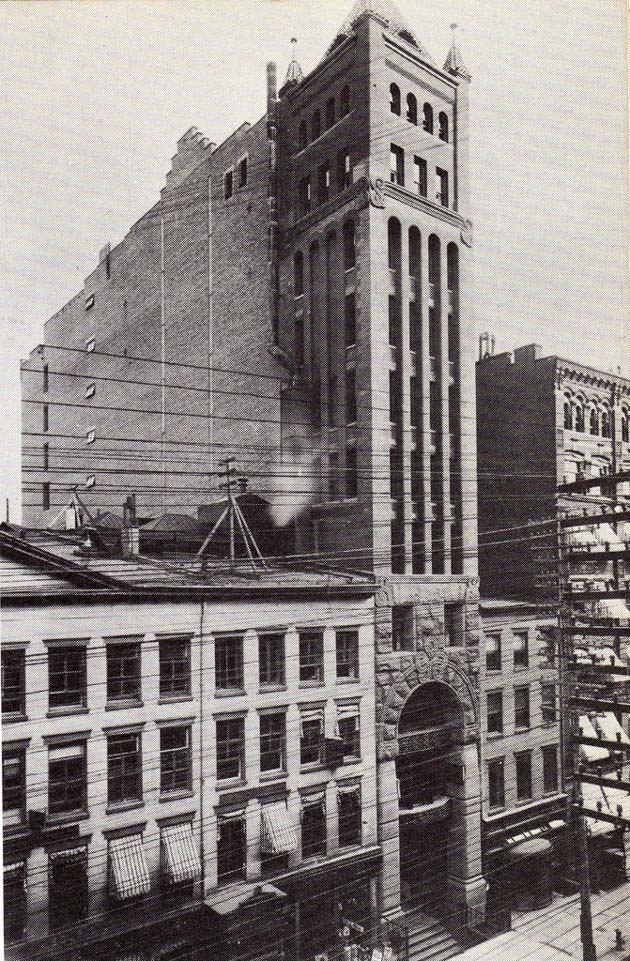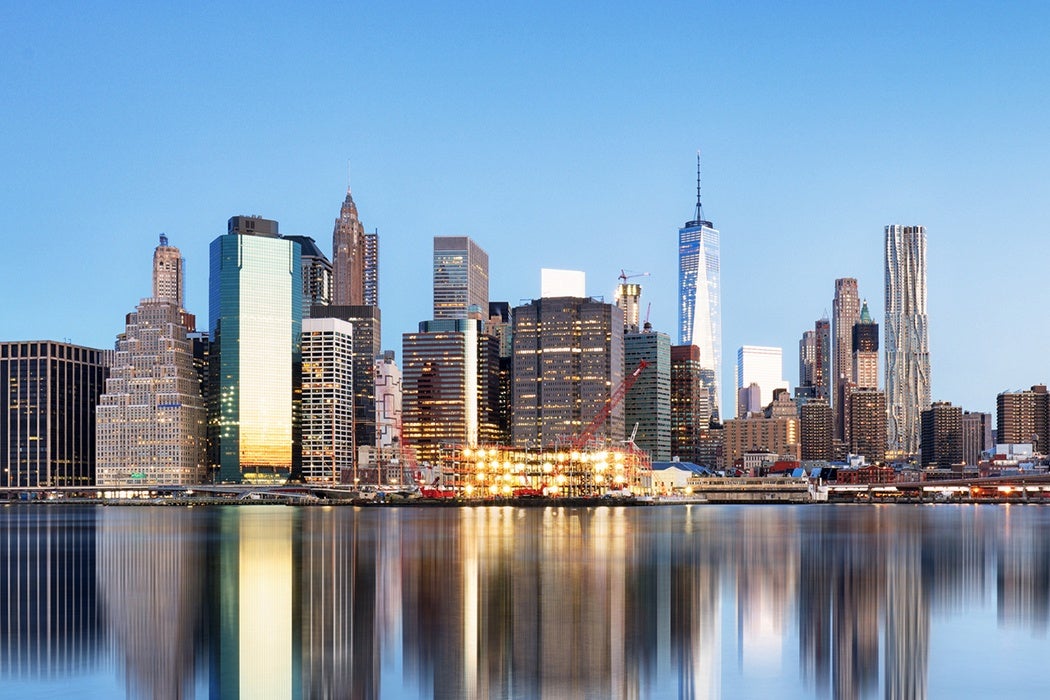Why does Manhattan have two separate business districts? The skyscrapers of Downtown and Midtown are separated by a low-rise “valley” made up the Lower East Side, East Village, and West Village. Why didn’t the older Downtown district just expand north? The generally accepted story is that the bedrock underlying the island in this “valley” is too far from the surface to make it economically feasible to sink the foundations necessary to anchor skyscrapers.
Though this “story is deeply embedded in the historiography of the city, it has never been empirically tested,” say economic historians Jason Barr, Troy Tassier, and Rossen Trendafilov, who went ahead and tested it. Taking as their example data from the first generation of NYC skyscraper building, 1890-1915, they show that “depth to bedrock” does indeed make construction more expensive, but not that much more expensive. Land acquisition costs were a greater factor in determining location, as were the economic tradeoffs for those locations.

In fact, some of the first Downtown skyscrapers had bedrock more than 40 meters below them. (In comparison, the bedrock at the very southern tip of Manhattan is 8 meters down.) Simply put, some of these first “skyscrapers were built above some of the deepest bedrock in the city” because the extra cost of doing so was off-set by “sufficient demand-side benefits.”
And were there ever benefits! “The polycentric nature of Manhattan was driven more by demand for skyscrapers in particular neighborhoods rather than the inability of suppliers to provide them in other places. Real estate developers built skyscrapers to be near already established centers of commerce, where transportation was easily accessible, and away from slums and manufacturing districts.” Skyscrapers were built in the center (later both centers) of the city because the benefits of urban agglomeration increased rental income, making up for the extra costs of the land itself and/or digging deeper.
New York City’s first skyscraper, the Tower Building at 50 Broadway, was eleven stories high and completed in 1889. In 1890, the tallest building in the world, the New York World Building, was 20 stories. Such efforts at scraping the sky were modest in comparison to the towers that came later, but a leap upward in comparison to what preceded them.
Technology was key here: steel frames replaced load-bearing masonry walls. Load-bearing masonry needs to get thicker at the base the taller a building rises, limiting its use on small plots of land. Steel is much more vulnerable to fire than masonry, so fireproofing became another important part of the new construction. The other great skyscraper technology will be intimately familiar to anyone who has ever regularly walked up five or more flights of steps: elevators.
Once Downtown become too crowded and expensive, developers colonized Midtown, where Grand Central Terminal and Penn Station became the nuclei of expansion skywards. The supposed “valley” in-between was leapfrogged merely because there wasn’t any demand for building far from the transportation hubs that spilled forth workers.
Today the only space left in Manhattan is vertical. And it still isn’t the depth to bedrock that prevents high-rises in the belt between Downtown and Midtown. Now it’s zoning and protected historical districts.







